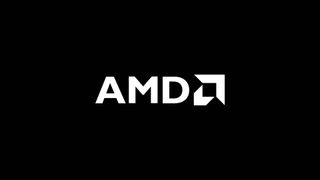Red Hat becomes billion dollar company
Along with breaking the billion barrier in revenues, the firm reveals it will be bringing SLAs to its Platform as a Service offering.

Red Hat today announced record results, showing the firm had broken through $1 billion in revenues for the first time.
The company sells a host of technologies based on open source software, including its own operating system, virtualisation tools and cloud solutions. Its portfolio is now getting more attention than ever, helping it break this milestone figure, often unheard of in the open source community.
Jim Whitehurst, president and chief executive (CEO) of the company, said: "Red Hat is the first pure-play, open source company, and one of only a select few software companies, to have achieved the billion dollar revenue milestone."
"The open source technologies which we provide are being selected by more customers every day as they re-architect the infrastructure of their data centers for greater efficiency, agility and cloud enablement."
Red Hat is the first pure-play, open source company, and one of only a select few software companies, to have achieved the billion dollar revenue milestone.
Totally revenue for the 2012 fiscal year came in at $1.13 billion (710 million), up 25 per cent on the previous 12 months. This was massively helped by a successful fourth quarter, which saw Red Hat bring in $297 million, an increase of 21 per cent year-on-year.
"The strength of our fourth quarter was a fitting conclusion to a remarkably strong year for our business," added Whitehurst.
Get the ITPro. daily newsletter
Receive our latest news, industry updates, featured resources and more. Sign up today to receive our FREE report on AI cyber crime & security - newly updated for 2024.
"Our investments to expand our geographic sales footprint and add sales people with targeted industry and product knowledge has accelerated our growth."
No fear of the competition
IT Pro attended a roundtable with Red Hat yesterday, hosted by the head of the company's cloud division, Scott Crenshaw.
He claimed his firm's strategy to bring an "open, hybrid cloud" model to businesses put Red Hat in a stronger position to provide the cloud computing businesses wanted for the future.
"VMware might be signing up to all these consortiums with open' in the title [but] it is a closed system," he said.
"With VMware they say virtualise 20 to 30 per cent of your data centre, which is based on VMware technologies. Why only [make a cloud] out of 30 per cent of your data centre?"
It wasn't just VMware who felt the effects of Crenshaw's sharp tongue though. Next up was Microsoft.
"Microsoft offer customers one part of their portfolio and then lock them in to the rest of it," he said. "That is not an open system."
When IT Pro asked about the competition from Citrix in the virtualisation space, Crenshaw said the firm might be making waves in the VDI space but "it is just not a player in this market."
"We offer an open, hybrid cloud to enable customers to put [applications] into the cloud when they choose and bring them back into the data centre if they want to. This is what is best for customers."
Jennifer Scott is a former freelance journalist and currently political reporter for Sky News. She has a varied writing history, having started her career at Dennis Publishing, working in various roles across its business technology titles, including ITPro. Jennifer has specialised in a number of areas over the years and has produced a wealth of content for ITPro, focusing largely on data storage, networking, cloud computing, and telecommunications.
Most recently Jennifer has turned her skills to the political sphere and broadcast journalism, where she has worked for the BBC as a political reporter, before moving to Sky News.
Most Popular






